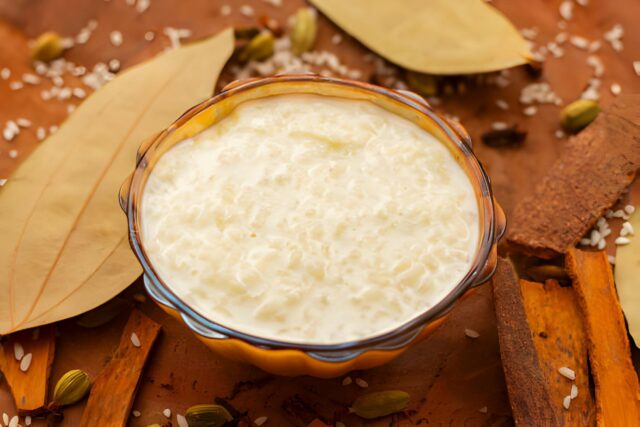Bangladesh is enhanced with desserts and pastry .Some of them are specified here.
Gulab jamun
Gulab jamun, or gulab jamun, is a milk-solids-based sweet mithai, famous in nations of South Asia, specifically in India, Sri Lanka, Nepal (known as lal mohan), Pakistan and Bangladesh. It is likewise regular in Mauritius and the Caribbean nations Trinidad and Tobago, Guyana, Suriname and Jamaica. It is made primarily from milk solids, customarily from newly soured milk. It is regularly decorated with dried nuts like almonds to improve flavor as per Middle Eastern tradition.Gulab jamun was initially arranged in medieval India, got from a waste that Persian-talking trespassers conveyed to India. One hypothesis asserts that it was inadvertently arranged by the Mughal sovereign Shah Jahan’s own cook.

cham cham
Chomchom, cham, or mate is a conventional Bengali sweet started from Porabari, Tangail,Bangladesh. It is an exceptionally mainstream dessert in Bangladesh and India. The cooking arrives in an assortment of hues, principally light pink, light yellow, and white. It is additionally covered with coconut chips as a topping. The sweet is of oval shape and earthy color.Porabari in Tangail District, Bangladesh, has been popular for Chomchom since 150 years prior. In any case, for last couple of years most Chomchom stores were moved to Panch Ani Bazar, focal point of Tangail city.The principle fixings are flour, cream, sugar, saffron, lemon juice, and coconut pieces.

Rasgulla
Rasgulla is a syrupy treat well known in the Indian subcontinent and areas with South Asian diaspora. It is produced using ball molded dumplings of chhena (an Indian curds) and semolina batter, cooked in light syrup made of sugar. This is done until the syrup penetrates the dumplings. The dish started in East India; the present-day conditions of Odisha and West Bengal are differently asserted to be the origin of the dish.

The sweet is known as Rosogolla or Rosogolla in Bengali and Rasgulla in Oriya. Rasgulla is gotten from the words ras (“juice”) and gulla (“ball”).Other names for the dish incorporate Rasgulla, Rossogolla,Rasgulla, Rasgulla, Rasgulla, and Rasbhari or Rasbari (Nepali).
The conventional Odisha rasgullas are gentler and creamish in shading than Bengali rasgullas. The Bengali rasgullas are whitish and rubbery.
The Pahal Rasgulla from the Pahala zone (situated between the urban communities of Bhubaneswar and Cuttack) is likewise famous in India.
Commonly, a 100 gram serving of rasgulla contains 186 calories, out of which around 153 calories are as sugars. It likewise contains around 1.85 grams of fat and 4 grams of protein.
Ras malai
Ras malai or rasmalai is a treat starting from the Indian Subcontinent. The name ras malai originates from two words in Hindi:ras, signifying “juice”, and malai, signifying “cream”. It has been depicted as “a rich cheesecake without a covering.” The sweet is of Bengali cause; as indicated by K.C. Das Grandsons, it was created by K.C. Das.

Ras malai comprises of sugary white cream, or yellow-hued (leveled) chunks of chana absorbed malai (thickened cream) seasoned with cardamom. It is cooked in sugar syrup and milk with saffron, pistachios and kheer as stuffing. Natively constructed rasmalai is normally produced using powdered milk, universally handy flour, preparing powder and oil, which are worked to shape a batter, formed into balls, and dropped into stewing milk cream.
Rasmalai is accepted to have started in West Bengal. The K.C. Das Grandsons confectioners guarantee that it was imagined by K.C. Das, yet this case is said to be “difficult to check”.
Sandesh
Sandesh is a Bengali pastry made with milk and sugar. A few formulas of Sandesh require the utilization of chhena or paneer (which is made by turning sour the milk and isolating the whey from it) rather than milk itself. A few people in the area of Dhaka call it prana hara (actually, heart ‘stealer’) which is a milder sort of sandesh, made with mawa and the substance of curd.

A sweet dish by the name sandesh is specified in medieval Bengali writing, including Krittibas’ Ramayana and verses of Chaitanya. Be that as it may, the elements of this unique dish are not known. This dish was in all probability unique in relation to the cutting edge chhena-based sandesh, being made of cemented kheer.
It is difficult to decide when precisely did sandesh began alluding for the most part to the chhana-based sweet rather than the kheer-based sweet. In any case, it is realized that by the second 50% of the nineteenth century, sandesh usually alluded to the chhana-based sweet. The Portuguese impact may have prompted presentation of cheddar (i.e. chhena) in sixteenth century.
Sandesh can be made with the utilization of chhana or curds. The least complex sort of sandesh in Bengal is the makha sandesh (makha = worked). It is set up by hurling the chena daintily with sugar over low warmth. The sandesh is basically hot, sweetened chhana. At the point when formed into balls, it is called kancha golla (kancha = crude; golla = ball). For more mind boggling and intricately arranged sandesh, the chhana is dried and squeezed, seasoned with pith of natural products, and in some cases even shaded, and cooked to a wide range of levels of textures. Now and then it is loaded with syrup, mixed with coconut or kheer, and formed into an assortment of shapes, for example, conch shells, elephants, and fish. Another variation is nolen gurer sandesh, which is made with gur or jaggery. It is known for its cocoa or caramel shading that originates from nolen gur.
Mitha dahi
Mitha dahi or mishti doi is a matured sweet dahi (yogurt). This kind of yogurt is normal in the conditions of West Bengal and Odisha in India, and in Bangladesh. It is made with milk and sugar/jaggery. It varies from the plain yogurt in light of the procedure of readiness.

Mitha dahi is set up by bubbling milk until it is somewhat thickened, sweetening it with sugar, either gudda/gudda (chestnut sugar) or khajuri gudda/gudda (date molasses), and permitting the milk to age overnight. Pottery is constantly utilized as the compartment for making mitha dahi in light of the fact that the continuous vanishing of water through its permeable dividers further thickens the yogurt, as well as produces the right temperature for the development of the way of life. All the time the yogurt is gently prepared with a squeeze of elaichi(cardamom) for aroma. Heated yogurt is a comparative readiness in the west.
The chain of Annapurna Sweets in West Bengal and Delhi is known for its mishti doi. In 2010–2011 Mother Dairy attempted to market its own mishti doi arranged under their image name, however deals didn’t get then. Generally, in 2014–15 Mother Dairy and Danone brands are doing truly well with their mishti doi in the Indian business sector.
As dahi is additionally viewed as promising in Hindu religion, it is likewise arranged on happy events and festivities like Durga Puja and Diwali.
Malpua
Malpua is a hotcake served as a pastry or a nibble, famous in India and Bangladesh. It is additionally served to Jagannath in his Sakala Dhupa (morning nourishment served to the master). Amid Paush Sankranti, Malpuas are set up in Bengali homes. Malpuas alongside sheep curry is served in numerous non-veggie lover Maithil homes amid Holi.

The player for malpua in a few ranges is set up by pulverizing ready bananas or (in Bangladesh) coconut, including flour, and water or drain. The blend is now and again carefully prepared with cardamoms. It is pan fried in oil, and served hot. The Bihari adaptation of this dish has sugar added to the player preceding fricasseeing, while the strategy predominant in Odisha has the squanders plunged in syrup after they are browned.
Malpua is prevalent in Bangladesh, Odisha, West Bengal and Maharashtra and Nepal where it is served amid celebrations alongside different desserts. Amalu (Malpua) was presented in [Odisha]] as Chapana Bhoga of Lord Jagannath In Puri. It is one of the Chapana Bhoga of Lord Jagannath incorporated into the Sanja Dhupa (evening dhupa). Different varieties of Malpua use pineapples or mangoes rather than bananas. Bengali, Maithili and Oriya malpua is customarily made just with thickened milk and a little flour (at times rice flour rather than wheat flour).
Malpua in northern India, especially in Uttar Pradesh, Bihar and Rajasthan, don’t contain organic product. There are a few varieties, utilizing a few or the majority of the accompanying fixings: maida (refined flour), semolina, milk, and yogurt. The hitter is left to remain for a couple of hours before being spooned into a kadhai of hot oil to frame a gurgling flapjack which ought to be fresh around the edges. The flapjacks are then inundated in a thick sugar syrup. Malpua is a famous sweet to make on the Hindu religious event of Holi. Malapua is served at the Jagannath Temple in Ahmedabad day by day as prasad.
Malapua in Nepal otherwise called Marpa is exceptionally made in the Kathmandu Valley which utilizes maida, squashed up ready bananas, fennel seeds, pepper corns, drain and sugar into a hitter and arranged comparatively as in India.
Malpua is a popular dish amid the Muslim blessed month of Ramadan. Muslim families crosswise over India, and also Pakistan plan malpuas for iftar (supper to break the quick). This malpua incorporates maida, rawa, and khoya/mawa (milk solids), and is southern style to take the state of a flapjack. In a few formulas, malpuas are dunked in sugar syrup before serving. They are well known in Oriya and Bengali food
Kheer
Kheer is a rice pudding from the cooking of the Indian Subcontinent, made by bubbling rice, broken wheat, tapioca, or vermicelli with milk and sugar; it is enhanced with cardamom, raisins, saffron, cashews, pistachios or almonds. It is ordinarily served amid a dinner or as a pastry. It is additionally referred to in a few areas as payasam, payasa, gil-e-firdaus and fereni.

Jalebi
Jalebi, otherwise called Zulbia, is a sweet well known in nations of South Asia, the West Asia, North Africa. It is made by profound searing a wheat flour (maida flour) hitter in pretzel or roundabout shapes, which are then s


















































